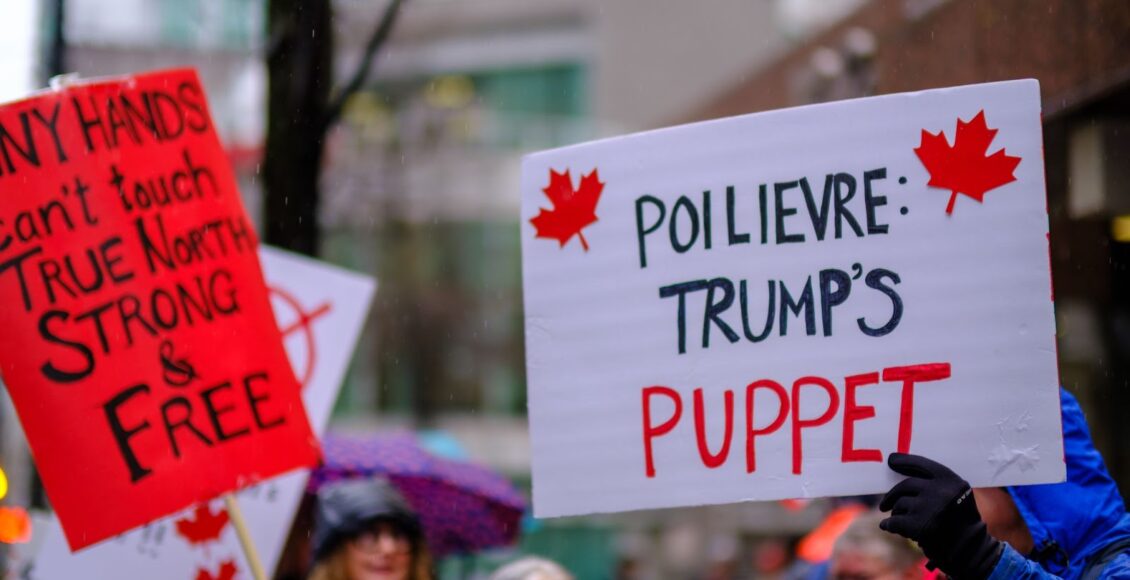How Pierre Poilievre Collapsed at the Goal Line

Pierre Poilievre, after years on the opposition benches, seemed destined to become the 24th prime minister of Canada. After nearly a decade of Liberal rule, the pendulum had begun to swing back to the right, and the Conservatives appeared to have cobbled together a coalition of Canadians ready for change.
Furthermore, while Prime Minister Justin Trudeau was losing the support of Canadians, Poilievre was building a brand as a conservative attack dog adept at wielding the bully pulpit. With Canadians becoming increasingly disillusioned with Canada’s economic reality, Poilievre appealed to them with populist rhetoric. This was centred around promoting growth through an emphasis on bolstering Canada’s extractive industries and decreasing the economic burden of expensive climate policies.
Through Poilievre’s attractive appeal to Canadians and Trudeau’s unpopularity, the Conservatives dominated the polls. They maintained a 10-point lead for all of 2024, reaching a 15 per cent lead in early January 2025. With some projections giving the Conservatives an overwhelming majority of over 200 seats, it seemed as though they would have guaranteed victory in the 2025 federal election.
Then, within a matter of mere months, Poilievre’s Conservatives collapsed at the goal line, watching their once-insurmountable lead evaporate before their eyes. Now, it appears highly unlikely that they will win the election this Monday.
With Trudeau’s resignation in January and the emergence of Donald Trump’s combative foreign policy, the Conservatives have suddenly found themselves on the outside looking in. Poilievre’s strengths have rapidly turned into weaknesses. Following Mark Carney’s ascension to become Canada’s 24th prime minister, Poilievre’s primary strategy of Trudeau-bashing became strategically irrelevant. And throughout the election campaign, one of Poilievre’s greatest liabilities has been his fiery temperament. While this same combative style initially garnered the Conservatives significant support among many Canadian voters, it has since created an uncomfortable ideological link between Poilievre and Donald Trump—an association making many Canadians increasingly wary of the Conservative party. In a volatile environment where Canada faces growing economic uncertainty amidst an emerging trade war, Poilievre’s confrontational approach has failed to evolve. What once read as conviction now appears as belligerence ill-suited for diplomacy and the delicate navigation of foreign policy.

Over the course of the campaign, the Conservatives have appeared woefully unprepared for an election they have been demanding for years. They were the last major party to release a platform—just 30 pages long, many of which were filled with photographs rather than substantive policy proposals—leaving voters questioning their readiness to govern. Furthermore, it is now evident that their election strategy was poorly equipped to handle any shake-up in the race. In the face of declining numbers, Poilievre has shown a surprising refusal to pivot and moderate his message. While doubling down on right-wing populism may have solidified his base, it has alienated the centrist voters who ultimately decide Canadian elections. This strategic misstep has been particularly costly in the battleground ridings of the Greater Toronto Area, where polls show that the Liberal party has a healthy lead.
On Thursday, in a sign of growing Conservative anxiety, Poilievre even campaigned in Saskatoon—a surprising move in the final days of the race, given that the party currently holds all three seats and typically enjoys strong support in Saskatchewan’s biggest city. Some polls show only a four-point gap between the Conservatives and Liberals in Saskatoon, with the Conservatives at 43 per cent and the Liberals close behind at 39 per cent. Additionally, rumours are now circulating that Poilievre’s own riding of Carleton—a traditionally Conservative stronghold near Ottawa—may be at risk of flipping to the Liberals.
The Conservative party, formed in 2003 through the merger of the Progressive Conservatives and the Canadian Alliance, has long struggled with its dual identity. More than two decades later, it seems as if it was only Stephen Harper who had the capabilities to successfully balance the party’s competing factions long enough to secure power. Poilievre’s rightward lurch has reopened old wounds, leaving questions about the future of the Conservatives themselves.
Just a few days ago, Progressive Conservative Nova Scotia Premier Tim Houston released a high-production video on social media titled “My name is Tim and I am Nova Scotian” (shown below), which has since garnered over a million views on X. While the video ostensibly celebrates the province, much of it centres on Houston himself. Given that he is guaranteed to remain premier until 2028 with a majority government, there is little reason for such a self-promotional ad—unless Houston is signalling federal ambitions. Some have even speculated that the video basically marks the unofficial launch of a campaign to replace Poilievre—before the federal election has even taken place.
My name is Tim and I am Nova Scotian pic.twitter.com/n3TAws0fIa
— Tim Houston (@TimHoustonNS) April 23, 2025
If Monday’s results confirm the polls, it will mark the Conservative party’s fourth consecutive election defeat—a devastating outcome for Polilievre. The man who only a few months ago seemed destined to become prime minister now faces the harsh reality of a political landscape that has shifted beneath his feet, leaving him fighting not for victory but for his very political survival.
Edited by Maisie Minnick
Featured Image: “Poilievre: Trump’s Puppet” by Michael Kalus is marked with CC BY-NC-SA 2.0.
